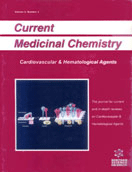Abstract
Thrombolysis is conventionally regarded as dissolution of the fibrin matrix of thrombi by plasmin, a protease generated by plasminogen activators from its inactive precursor, plasminogen. Typically plasminogen activation occurs on the surface of the clot, where fibrin behaves as a cofactor in this process, and plasmin also initiates its proteolytic action at the fluid-solid interface. Although the basic reactions of the plasminogen/plasmin system in fluid phase are well characterized in terms of classical enzymology, they cannot explain completely the interfacial fibrinolytic events. Recently new methods have been introduced for quantitative evaluation of plasminogen activation on gel-phase fibrin and heterogenous-phase proteolysis, an overview of the new methodology is presented. Following formation of an interfacial lytic zone, fibrin dissolution proceeds through propagation of this zone to the core of the clot, which depends on diffusion and permeation phenomena affected by the composition of thrombi. Phospholipids (originating from platelets) form a diffusion barrier to the thrombolytic agents and also bind some of them; structural cellular proteins (namely myosin) interact with the fibrin fibers masking their cofactor and plasmin-cleavage sites. The contribution of these recent findings to our understanding of the limitations of current thrombolytic therapy is discussed. Finally, attention is focused on the termination of thrombus-associated proteolytic action in an environment abundant in proteinase inhibitors. Thus, combining together the interfacial events in the initiation, progress and termination of thrombolysis, a concept for modeling the thrombus as a temporary fibrinolytic compartment is presented.
Keywords: thrombolysis, plasmin, plasminogen activators, fibrin, platelets
 4
4













